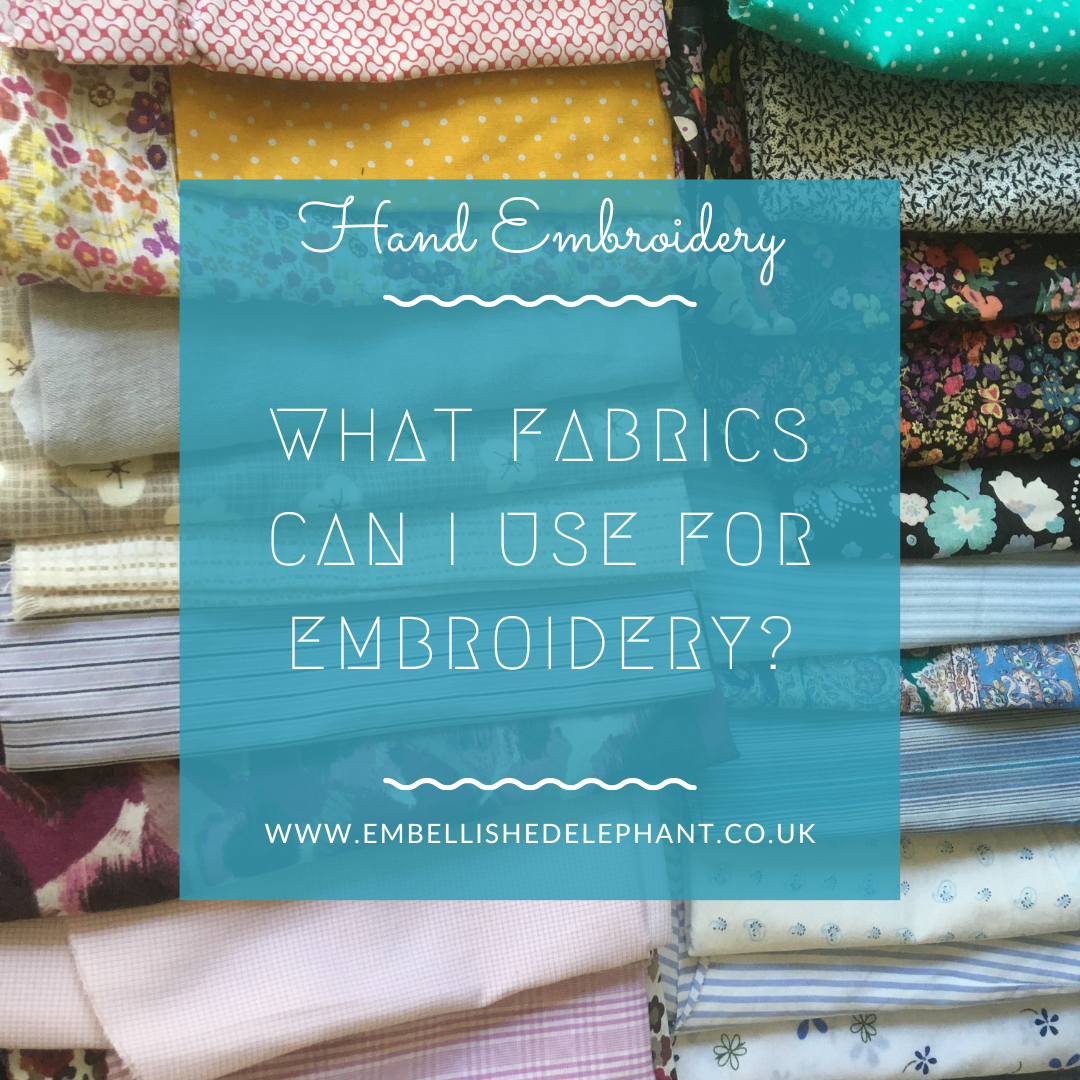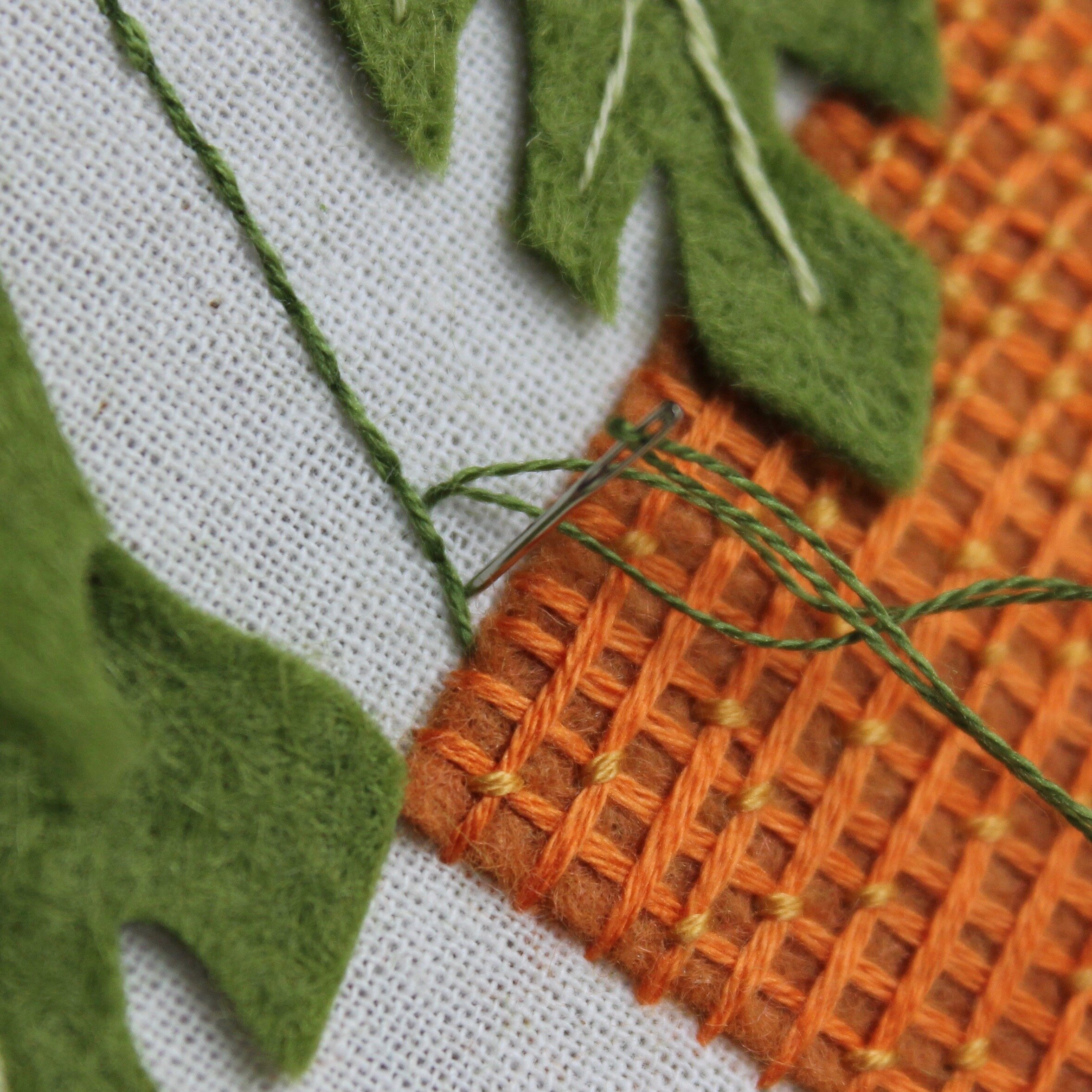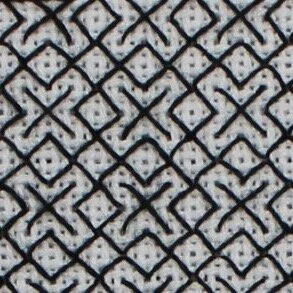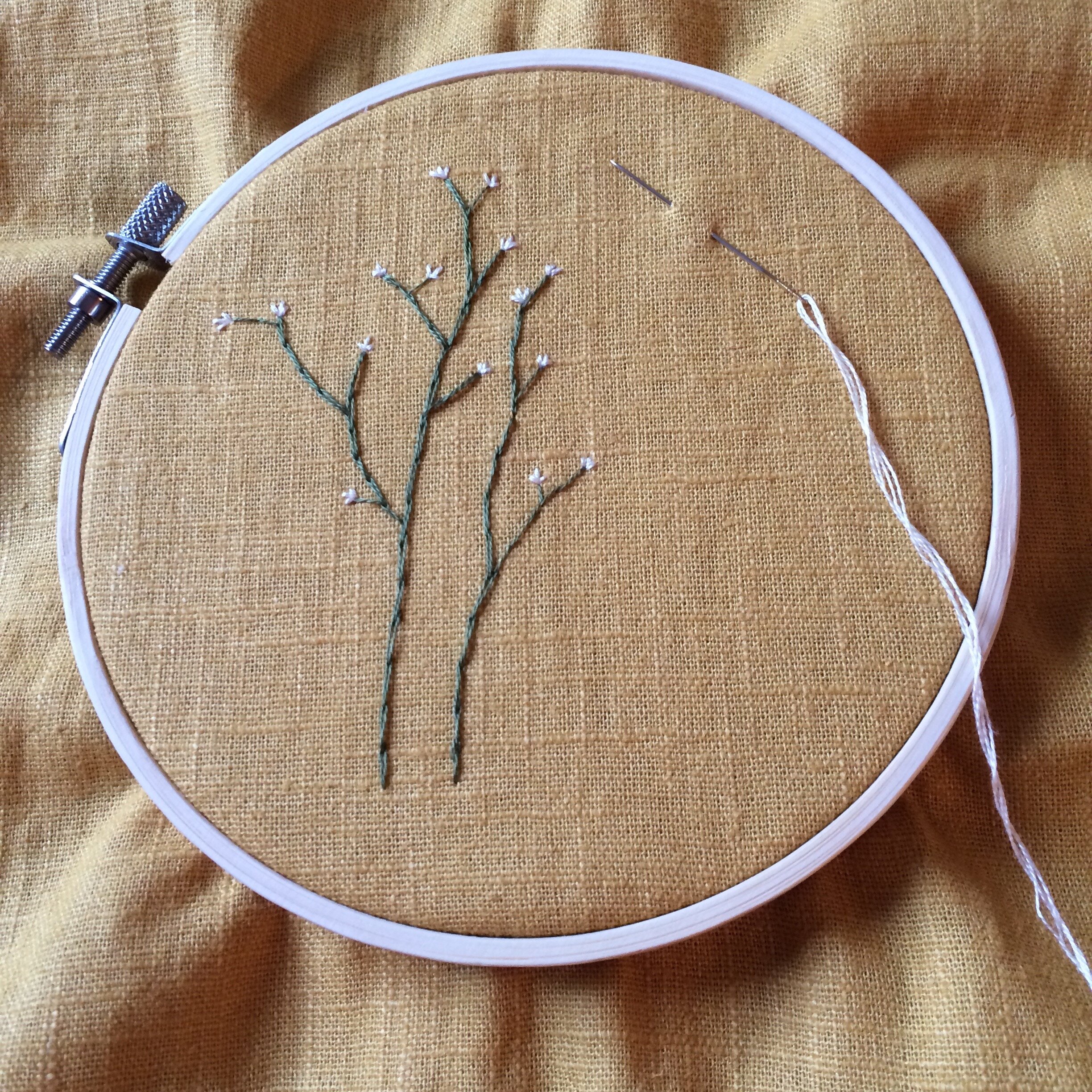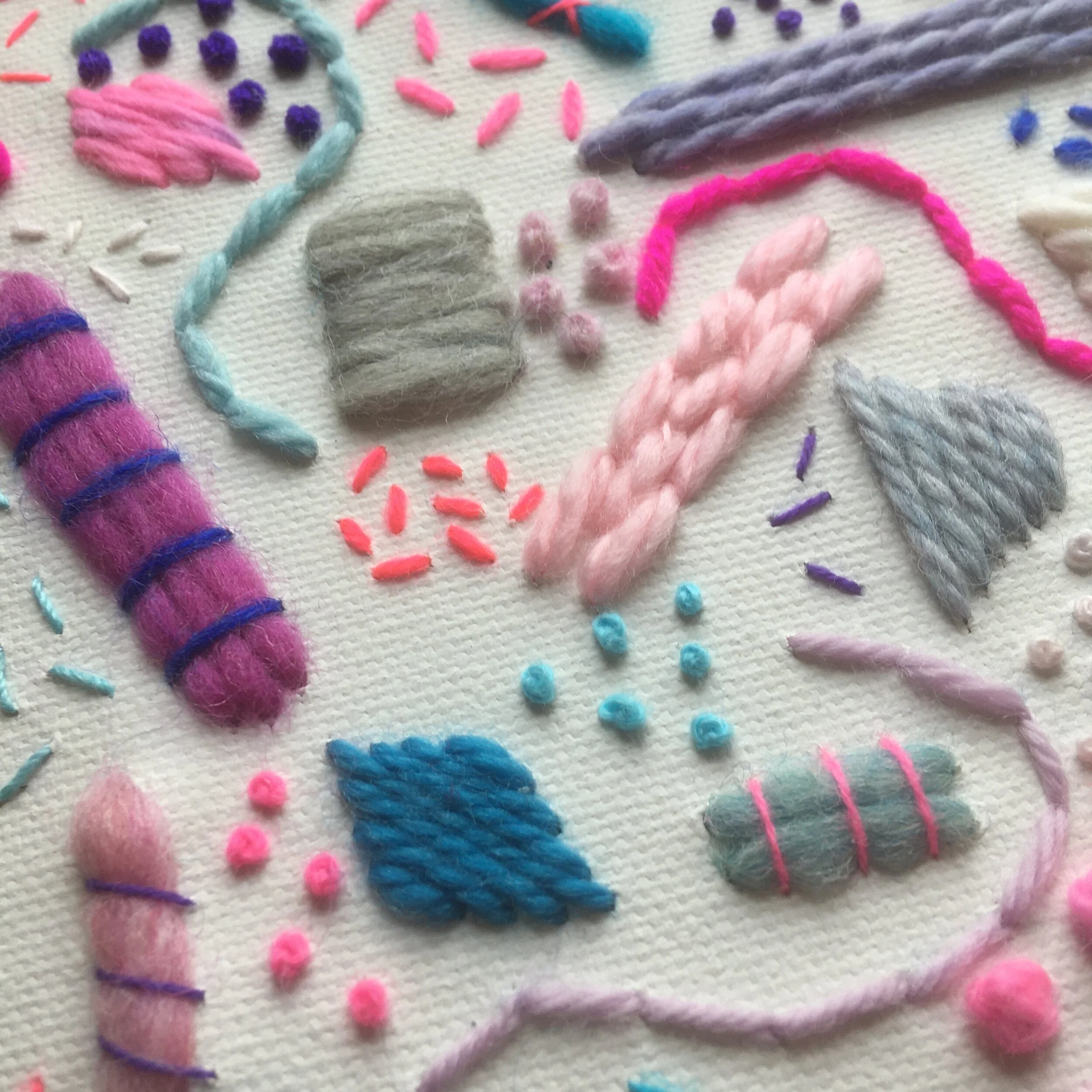You can embroider on so many different types of fabric, it really depends on the project you are working on and the effect you are trying to create. All of the fabrics below are woven rather than knit (stretchy fabrics) as stitching on stretch fabrics requires some different techniques.
Here are some of the woven fabrics that I’ve tried and tested.
Calico
I use calico for many of my kits. It’s a fabric with a bit of weight to it meaning it can hold the weight of the stitches.
Cotton
When I’m not stitching on calico, cotton is my next fabric of choice. I most often stitch on old shirts or offcuts from dress making that are in my stash.
The benefit of cotton is that you can get some great patterned fabric that you can use. This fabric is an old white shirt that I dyed and then embroidered on.
But cotton fabric comes in different weights - very lightweight fabric such as cotton lawn won’t hold the weight of the stitches on their own. Using a second layer of fabric under the first layer helps solve this problem.
Evenweave
The clue is in the name - this type of fabric has an even number of warp and weft threads per inch. It means that if you stitch is five holes in length you can count this number of holes for every stitch you make to get stitches of identical length. It’s the fabric used for techniques such as blackwork and hardanger but you can also use high count evenweave fabrics for standard embroidery too (higher count means more warp/weft threads per inch and smaller gaps in between).
Linen
Much like calico, linen can take the weight of the stitches on their own.
However, linen creases and frays quite a lot so you need to be prepared to deal with that when stitching on linen.
Hessian
I’ve been experimenting more and more with hessian recently and much like evenweave there are a set number of warp and weft threads per inch but the weave of the fabric is very open.
It’s great if you want to stitch with yarn as the holes are large enough to fit the yarn through without too much tugging needed.
Felt
Felt can be great to embroider on as it doesn’t fray so it great for projects that may have a raw edge like decorations or brooches. I’ve also used it for larger pieces as it can hold the weight of stitches.
The thickness of the felt means that if you are using an embroidery hoop you’ll probably have to loosen the screw much more than you are used to to accommodate the extra bulk.
Denim
I’ve had a few pairs of jeans that are no longer wearable and not suitable for the charity shop which I’ve cut up and are in my stash, but you can also embroider on still intact garments!
I’ve experimented a couple of times with stitching on denim. I love the finished look but it is a tough fabric to work with because of the thickness and close weave. In this sample I stitched with yarn which was tough going on the fingers.
I’d also recommend checking whether there is any stretch to your denim and putting any sections with stretch to one side for now.
Canvas
I’ve picked up a few of these pre-stretched canvases from the local pound shop. You can embroider on them as is (I’ve also removed the fabric and used the frame to stretch my own fabric over). The main thing to consider with these canvasses is the width of the frame meaning that it is difficult to stitch right up to the edge so that has to be taken into account in your design.
Enjoyed this blog post? I share embroidery tips and a free embroidery pattern in my monthly newsletter. Sign up here to receive the newsletter on the 1st of each the month.

